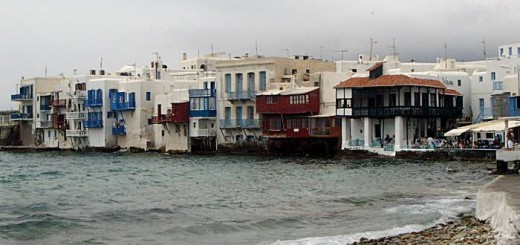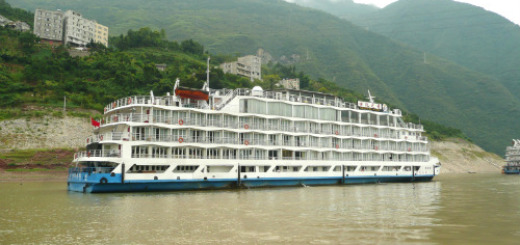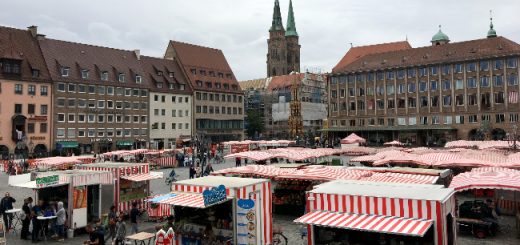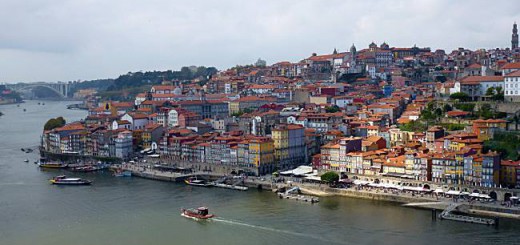Gallipoli

The day began with a long drive from Istanbul down the European side of the Marmara Sea. We passed Gallipoli (Gelibolu) village which gives its name to the peninsula, but our main quest was to see where the Australian and New Zealand troops (ANZACs) fought in WW1 on the beach and cliffs on the western side of the peninsula, in what came to be known as the Gallipoli Campaign.

For most Australians, the landing on 25 April 1915 is considered to have taken place on a short stretch of beach known as Anzac Cove. However the landing area stretched from the beach south of Ari Burnu point, which is technically the cove in question, to an area several kilometres further north. This is because some of the first waves of boats drifted off course and were forced to land at the wider North Beach beneath the Sphinx, a weathered pinnacle from which the ground falls steeply away into narrow gullies. Looking up from the beach to the cliffs that the men had to scale – and engage the Turks – it is no small wonder that the action failed.
This ill-fated and ill-considered attempt to secure the land which would allow Allied forces to control the shipping lanes of the Dardanelles and then proceed to take Constantinople (Istanbul) became the legend of the Aussie Digger which is fixed firm in this nation’s psyche. At the same time, the Turkish victory became a defining moment in that nation’s history. For the campaign told the story of heroism and mateship on both sides of the trenches and a mutual respect for the enemy, with whom neither side really took any pleasure in fighting.

Consequently, at the cemetery at Ari Burnu, an inscription on a wall records the feelings of the Turkish people, expressed by their leader Mustafa Kemal (Atatürk), that the bodies of the fallen “Johnnies” should be held in honour and regarded as sons of Turkey since they lie in Turkish soil. Very moving for an Australian to read.
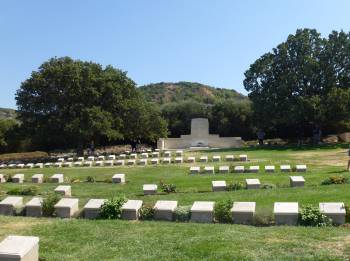
Until 2000, the Cemetery at Ari Burnu was the location of a dawn service, held on 25th of April, to commemorate the sacrifice of the 97,000 allied troops who gave their lives in this 8 month campaign as well as those who have since died in all wars.
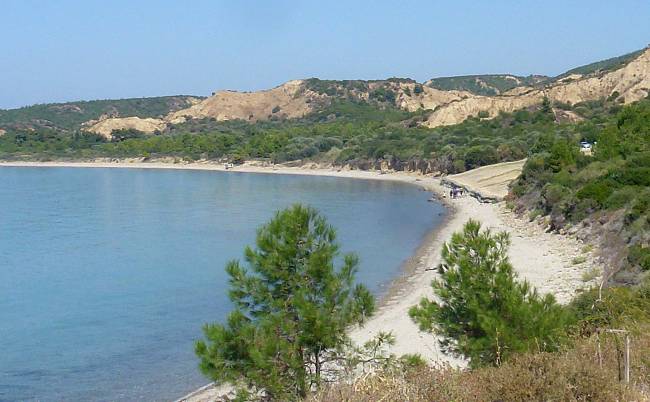
When attendances escalated in recent years the location was moved to North Beach. At this Anzac Commemorative Site a series of interpretative panels tells the story of the conflict and it was from here, on the morning of 20 December 1915, that the last Australian soldiers left Anzac at the final evacuation.
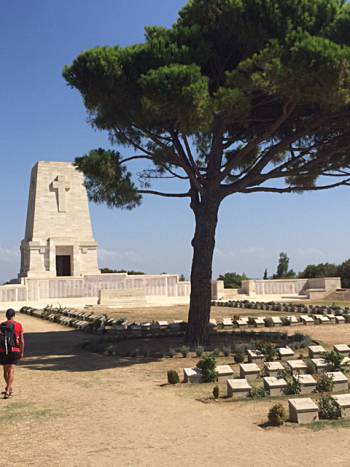
The battle of Lone Pine was the closest the ANZAC troops came to any success in the campaign. This strategically important plateau was the scene of some of the most desperate and intense fighting of the campaign. It is now also the site of the War Memorial and Cemetery for the many who perished during it. There are 1,167 allied troops buried or commemorated in this cemetery, of which 504 are unidentified. The Memorial bears the names of 3,268 Australian soldiers and 456 New Zealand soldiers who fought at Gallipoli and who have no known graves, and also of 960 Australians and 252 New Zealanders who incurred mortal wounds or sickness and were buried at sea. It was very sad to read the ages of the men who died there, some as young as 16 years old.

It is also the site of a specifically Australian memorial service on 25th April each year. The pine tree we can see there was planted in the 1920s to symbolise the single Turkish pine that the ANZAC troops found remaining there at the time of the battle and which lent its name to the site. Saplings propagated from the original tree have been planted at many war memorials in Australia and New Zealand.

Further along this high ridge we stopped to pay our respects at the Turkish Cemetery and Memorial which honours the men of the 57th Infantry Regiment, of whom Lt. Col. Mustafa Kemal was the leader. It is a largely symbolic cemetery containing the names of many servicemen randomly selected to be inscribed on headstones or plaques on the walls. The names of 1,817 soldiers who lost their lives there, including 25 officers, have been identified.
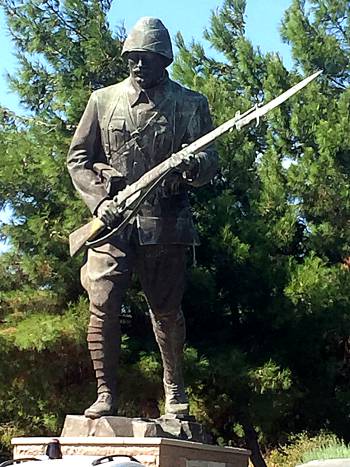
Outside the cemetery, there stands a massive statue – Türk Askerine Saygi (Respect for the Turkish Soldier) – symbolising the courage and determination of the Turkish troops who met that early 1915 assault.

Back down on the Eastern side of the peninsula, on the edge of the Dardanelles at the town of Eceabat, there are a couple of memorials which tell some of the stories of the campaign. Along the beach front a diorama has been constructed to show the fighting conditions for the Turks in the trenches and the proximity of them to ANZAC lines.
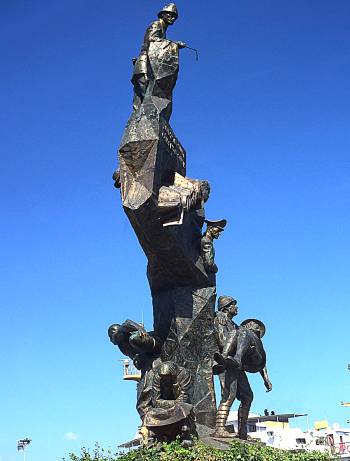
There is also a huge statue to commemorate some of the individual stories of heroism and courage amongst the Turks, including the figure of a Turk carrying a wounded Australian.
A short ferry ride took our bus from Eceabat across the Straits to Çanakkale, where at the Hotel Kolin we shared our impressions of the day with other Aussies, after what had been quite an emotional experience for us all.
Related articles
- The letter that changed history (adelaidenow.com.au)
- Gallipoli and the ANZACs (gallipoli.gov.au/)
